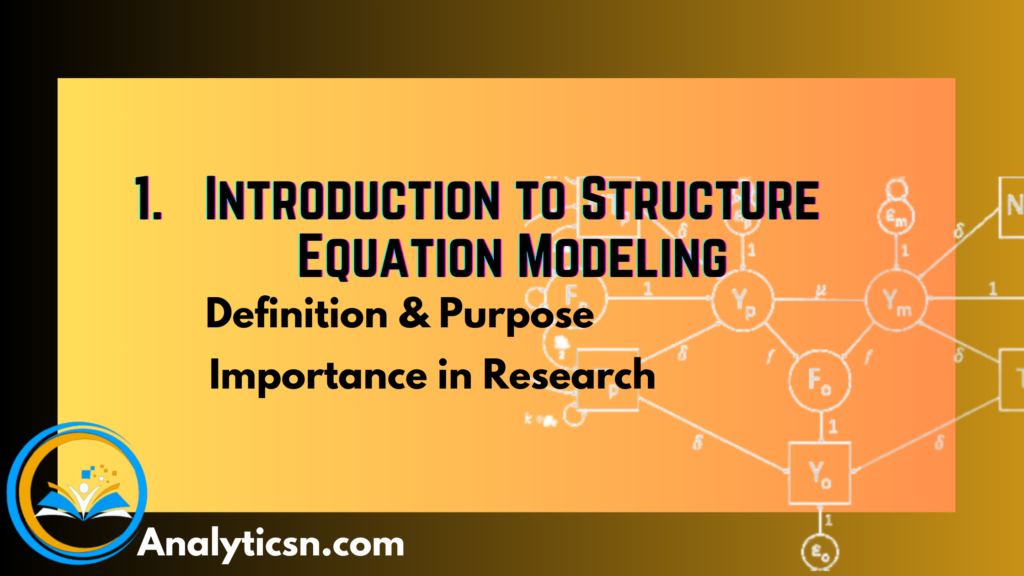
Definition & Purpose of Structural Equation Modeling (SEM)
Structural Equation Modeling (SEM) is a powerful statistical technique used to test and estimate complex relationships among variables. Unlike simpler statistical methods that focus on individual relationships, SEM allows researchers to simultaneously examine multiple relationships within a single model. It integrates aspects of path analysis, factor analysis, and regression into a comprehensive framework, making it particularly valuable for investigating complex theoretical models in various disciplines such as social sciences, psychology, economics, and more. Learn about Fundamentals of Structural Equation Modeling
SEM serves multiple purposes in research. Firstly, it enables researchers to explore and confirm the relationships hypothesized between variables in a theoretical model. This is achieved through the explicit specification of both observed and latent (unobserved) variables, which helps in understanding the underlying structure of phenomena. Secondly, SEM facilitates testing intricate hypotheses by assessing the direct and indirect effects among variables. This capability is crucial for advancing theoretical understanding and refining models based on empirical data.
| Key Points | Things to remember |
| Definition | SEM is a powerful statistical technique for testing complex relationships among variables. |
| Integration | Integrates path analysis, factor analysis, and regression into a comprehensive framework |
| Multi-Relationships | Allows simultaneous examination of multiple relationships within a single model. |
| Application | Used across disciplines like social sciences, psychology, and economics |
| Research Purposes | Confirms relationships between observed and latent variables |
| Hypotheses Testing | Evaluates direct and indirect effects to refine theoretical models |
Importance of Structural Equation Modeling (SEM) in Research
The importance of SEM lies in its ability to handle measurement error explicitly, distinguishing it from traditional regression analysis. By incorporating measurement models alongside structural equations, SEM improves the accuracy of estimates and enhances the robustness of findings. Moreover, SEM allows for the examination of complex models that involve mediation, moderation, and latent variables, which are difficult to analyze using simpler methods. This capability makes SEM indispensable for researchers aiming to model complex systems and understand the interplay of variables in depth.
SEM provides a sophisticated analytical approach that validates theoretical frameworks and uncovers nuanced relationships within data. Its advantages in handling complex models, incorporating measurement error, and exploring indirect effects make it a cornerstone in contemporary research across disciplines. As such, understanding SEM is essential for researchers aiming to conduct rigorous and insightful investigations into the complexities of real-world phenomena.
| Key Points | Things to remember |
| Handling Measurement Error | Explicitly addresses measurement error, enhancing accuracy compared to traditional regression. |
| Improving Accuracy | Incorporates measurement models with structural equations to improve estimate accuracy |
| Enhancing Robustness | Strengthens findings by robustly handling complex relationships and data structures. |
| Examining Complex Models | Allows analysis of mediation, moderation, and latent variables within models |
| Critical for Complex Systems | Essential for modeling intricate systems and understanding variable interplay deeply |
More Articles

10. A Secret to Data Transformation
What is data transformation? A woman presenting data, a hand holding a medal, two people chatting, a ship’s wheel being...
Learn More >

